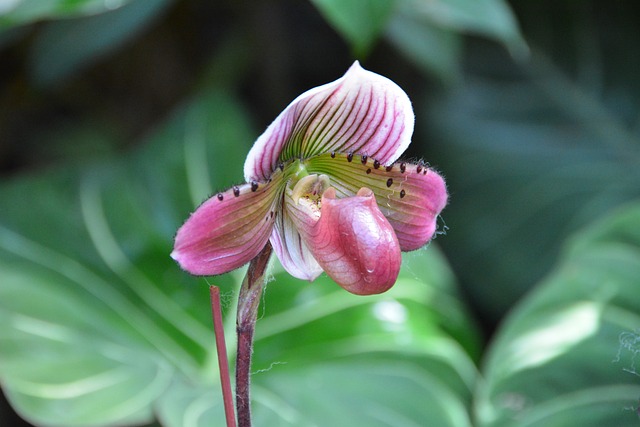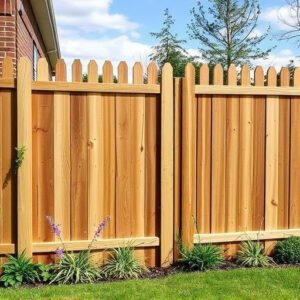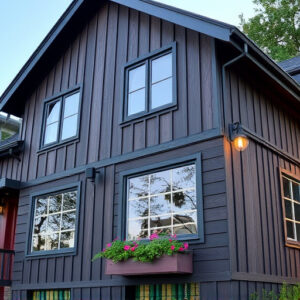Optimize Your Lawn: The Essence of Mulching & Edging for Lush Landscapes
Mulching is an essential aspect of effective lawn care and landscaping, offering a suite of benefits including moisture conservation, soil enrichment, weed suppression, and temperature regulation. By applying an organic or inorganic layer over …….

Mulching is an essential aspect of effective lawn care and landscaping, offering a suite of benefits including moisture conservation, soil enrichment, weed suppression, and temperature regulation. By applying an organic or inorganic layer over the soil, mulch helps to conserve water, release nutrients into the soil as it decomposes, and create an environment less hospitable to weeds. This practice not only enhances grass health but also supports ecological sustainability by potentially reducing the need for chemical inputs. When selecting mulch, consider local climate conditions, soil pH, and plant types to optimize its effectiveness. Additionally, defining lawn boundaries with edging is crucial for maintaining a neat and well-maintained appearance, preventing grass intrusion into garden paths or flowerbeds, and streamlining maintenance efforts. Edging contributes to healthy growth by keeping plants within their designated spaces, and choosing the right edging material based on durability, aesthetic preference, and ease of installation will complement your lawn care and landscaping design. Regular edging maintenance helps preserve the clean lines and enhance the overall presentation of your outdoor space, making it an integral part of a professional lawn care and landscaping regimen that aims to maximize curb appeal and visual impact.
Maintaining a lush, vibrant lawn is a cornerstone of picturesque landscaping. Two essential practices in this endeavor are mulching and edging, which not only enhance the appearance but also contribute to soil health and plant growth. This article delves into the intricacies of these techniques, guiding you through the benefits of mulching for a healthy lawn, the selection of appropriate mulch types based on your soil and climate, and the art of precise edging to define lawn boundaries with curb appeal. We will explore mulching methods in depth, discuss the various edging tools at your disposal, and provide seasonal advice to integrate these practices into your lawn care and landscaping routine for optimal results. Additionally, we’ll address eco-friendly practices to ensure your lawn is cared for sustainably. Embark on this journey to transform your lawn from ordinary to extraordinary with our comprehensive guide on mulching and edging.
- Understanding Mulching: Benefits for a Healthy Lawn
- Choosing the Right Mulch for Your Lawn's Soil and Climate
- Step-by-Step Guide to Effective Mulching Techniques
- The Art of Edging: Defining Lawn Boundaries for Curb Appeal
Understanding Mulching: Benefits for a Healthy Lawn

Mulching is an integral practice within the realm of lawn care and landscaping, offering a multitude of benefits that contribute to a healthy lawn. This technique involves applying a layer of organic material over the soil on your lawn. It serves as a protective cover that conserves soil moisture by reducing evaporation rates, thereby minimizing the need for frequent irrigation. The decomposition of organic matter in mulch enriches the soil with essential nutrients, promoting robust plant growth and fostering a more resilient turf. Furthermore, mulching helps to suppress weed growth by creating an unfavorable environment for weeds to germinate and thrive, allowing your lawn to maintain a uniform and attractive appearance. In addition to these advantages, mulching also aids in regulating soil temperature, keeping it cooler in the summer and warmer in the winter, which is conducive to sustained grass growth throughout varying seasons. The act of regular mulching as part of a comprehensive lawn care and landscaping strategy can significantly enhance the overall health and vibrancy of your lawn. Implementing this practice not only simplifies maintenance but also contributes to environmental sustainability by reducing the use of chemical fertilizers and pesticides, making it a win-win for both your lawn and the environment.
Choosing the Right Mulch for Your Lawn's Soil and Climate

When it comes to selecting the appropriate mulch for your lawn, understanding the specific needs of your soil and local climate is paramount in effective lawn care and landscaping practices. Mulching serves a multifaceted role, from retaining soil moisture and suppressing weeds to improving soil quality over time. The type of mulch that best suits your lawn will depend on factors such as regional climate, soil pH, and the plants you intend to cultivate. For instance, in cooler climates, organic mulches like shredded bark or compost can help maintain soil warmth, while in warmer regions, a lighter-colored mulch might be preferable to reflect sunlight and prevent heat buildup. In terms of soil type, sandy soils may benefit from a mulch that retains moisture well, such as wood chips, whereas clay soils might require a more porous mulch to improve drainage. Additionally, consider the decomposition rate of the mulch in relation to nutrients released into the soil—a slow-decomposing mulch like straw can provide long-term benefits for your lawn’s health. Always opt for locally sourced mulch when possible, as it is often more sustainable and better suited to the local ecosystem. By thoughtfully choosing the right mulch for your lawn’s specific conditions, you are taking a significant step towards effective lawn care and landscaping that can lead to a thriving, beautiful lawn.
Incorporating edging into your lawn care and landscaping routine complements the benefits of proper mulching. Edging clearly defines the border between your lawn and garden paths or flowerbeds, which not only enhances the aesthetic appeal but also prevents grass encroachment and simplifies maintenance tasks. When selecting an edging material, consider durability, ease of installation, and compatibility with your landscape design. Options like steel, plastic, or natural stone can all serve as effective edging solutions, each with its own set of advantages in terms of longevity and visual impact. The right combination of mulching and edging contributes to a well-maintained lawn that is both functional and visually appealing, making your outdoor space a focal point of beauty and tranquility. Remember to align the choice of edging with the overall landscaping design, ensuring it complements the existing features and enhances the curb appeal of your property.
Step-by-Step Guide to Effective Mulching Techniques

Effective mulching is a cornerstone of robust lawn care and landscaping practices, enhancing soil health and maintaining an attractive landscape. To achieve optimal results through mulching, it’s essential to follow a systematic approach. Begin by clearing the area of weeds and debris to ensure a clean surface for mulch application. Next, assess the type of mulch best suited for your lawn; organic options like wood chips or straw decompose slowly, enriching the soil over time, while inorganic mulches such as stones or rubber maintain a consistent bed without altering the soil composition.
When applying mulch, aim to create a barrier approximately 2-4 inches thick. This layer should cover the soil around plants and between garden rows without piling against plant stems to prevent rot. Use a rake or a hand tool to evenly distribute the mulch and gently press it into place. For lawn edges, define clear lines that separate your turf from garden beds or flowerbeds. Utilizing an edging tool like a half-moon or a spade can create a clean, crisp edge that reduces grass encroachment and conserves soil moisture. Regularly maintaining these edges with a trimmer or shears will upkeep their neatness and enhance the overall aesthetic of your lawn care and landscaping efforts.
The Art of Edging: Defining Lawn Boundaries for Curb Appeal

Maintaining well-defined lawn boundaries is an integral aspect of lawn care and landscaping that significantly enhances curb appeal. The art of edging serves to differentiate your meticulously cared-for lawn from garden beds, walkways, or flowerbeds, creating a neat and polished finish. Edging not only delineates the grass’s edge but also prevents the encroachment of turfgrass onto other areas, ensuring each part of your landscape thrives in its designated space. By using various tools such as manual edgers, gas-powered edgers, or even trenching edges, homeowners can achieve clean lines that complement the overall design and aesthetic of their property. This practice also facilitates easier maintenance by allowing for targeted care of each specific area, thus optimizing lawn health and appearance.
Incorporating edging into your regular lawn care and landscaping routine is a strategic choice for those who value the visual impact of their outdoor spaces. The act of edging can be as simple or as elaborate as desired, catering to both low-maintenance and intricate garden designs. For instance, a sharp border between the lawn and garden can highlight the contrast between the two, while in more elaborate settings, colored borders or decorative edging materials can add an extra touch of sophistication. Whatever the approach, edging remains a cornerstone of professional lawn care and landscaping practices, offering a clear demarcation that elevates the curb appeal of any home.
In conclusion, implementing effective mulching and edging practices plays a pivotal role in maintaining a thriving lawn that enhances both aesthetics and soil health. As outlined, understanding mulching’s benefits for your lawn sets the foundation for a robust landscaping regimen. Selecting the appropriate mulch type for your local soil and climate conditions ensures optimal results. By following our detailed guide on mulching techniques, homeowners can apply this practice with confidence and ease. Similarly, the art of edging serves as a vital step in defining lawn boundaries, contributing significantly to your property’s curb appeal. Integrating these strategies into your lawn care and landscaping efforts not only fosters a healthier environment for grass growth but also creates a visually appealing landscape that reflects thoughtful and attentive lawn maintenance.







